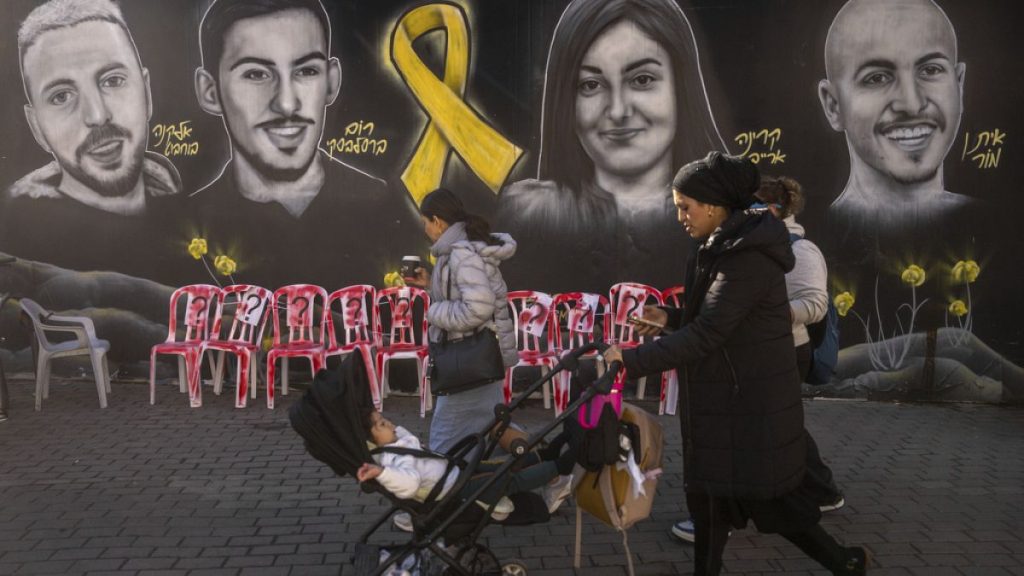The fragile ceasefire between Israel and Hamas hinges on a complex prisoner exchange, a delicate dance of diplomacy and a source of agonizing anticipation for families on both sides. Hamas, the Palestinian militant group that controls the Gaza Strip, announced on Friday the names of four hostages it intends to release as the first installment of a phased agreement. This initial gesture is part of a broader deal that will see a total of 33 hostages returned to Israel in exchange for the release of hundreds of Palestinian prisoners held by Israeli authorities. This exchange marks the first tangible step towards de-escalation after a devastating war that has left Gaza in ruins and claimed thousands of lives. While the names released by Hamas await confirmation from Israeli officials, they represent a glimmer of hope for the families of those still held captive. The fate of the remaining hostages, however, remains shrouded in uncertainty, with grim estimates suggesting that a significant number may have perished during the conflict.
The prisoner exchange is a central pillar of the ceasefire agreement, a crucial component in halting the violence and paving the way for further negotiations. It is a complex and emotionally charged process, fraught with political implications and deeply personal significance for the families involved. For Israel, the return of its citizens, both living and deceased, is a paramount concern. For Hamas, the release of Palestinian prisoners, many of whom have been held for years, represents a political victory and a fulfillment of a key demand. The exchange is not simply a logistical transaction but a highly symbolic act, highlighting the human cost of the conflict and the inherent value placed on human life within the context of this protracted struggle. The timing and details surrounding subsequent releases remain unclear, adding to the anxiety and uncertainty gripping the families of those still waiting for news.
The ceasefire itself is a temporary reprieve, a fragile pause in a decades-long conflict. It represents a moment of relative calm, an opportunity to address the immediate humanitarian crisis engulfing Gaza and to begin the arduous process of rebuilding. However, the underlying tensions and deep-seated grievances that fueled the conflict remain unresolved. The agreement includes provisions for the delivery of humanitarian aid to Gaza, a critical lifeline for a population reeling from the devastation of war. The extent to which this aid can reach those in need, and the effectiveness of its distribution, will be crucial in mitigating the suffering and preventing further escalation. The ceasefire is a temporary solution, a fragile bridge towards a more sustainable peace, the foundations of which remain elusive.
The war exacted a horrifying toll on the Palestinian population in Gaza. The Gaza health authorities report over 47,000 casualties, a staggering figure that underscores the brutality of the conflict. This figure encompasses both combatants and civilians, a grim reminder of the indiscriminate nature of war and the devastating impact on civilian populations caught in the crossfire. The destruction of infrastructure, the displacement of families, and the psychological trauma inflicted on the population will have long-lasting consequences, further compounding the already dire humanitarian situation in the besieged territory. The rebuilding process will be immense, requiring significant international support and a concerted effort to address the root causes of the conflict.
The catalyst for this latest round of violence was Hamas’s surprise attack on Israel on October 7, 2023, an assault that claimed the lives of approximately 1,200 Israelis. This attack, unprecedented in its scale and brutality, shocked the nation and triggered a swift and forceful response from the Israeli military. The ensuing conflict was characterized by intense fighting, widespread destruction, and a heavy loss of life on both sides. The attack and the subsequent Israeli response have further deepened the animosity and distrust between the two sides, making the prospects for a lasting peace even more challenging. The need for a comprehensive and sustainable solution to the Israeli-Palestinian conflict is more urgent than ever.
As the ceasefire holds, a tenuous peace hangs in the balance. The release of hostages is a crucial first step, a gesture of goodwill and a testament to the power of negotiation. However, the path ahead remains fraught with challenges. The underlying issues driving the conflict remain unresolved, and the potential for renewed violence is ever-present. The international community must play a crucial role in supporting the ceasefire, facilitating dialogue, and addressing the root causes of the conflict. The focus must shift from managing the crisis to achieving a lasting and just peace, a peace that guarantees security and dignity for all. The future of the region depends on it.














